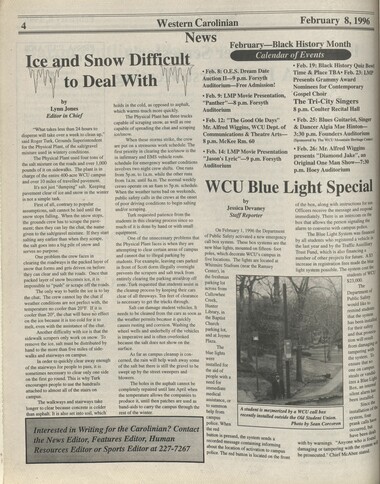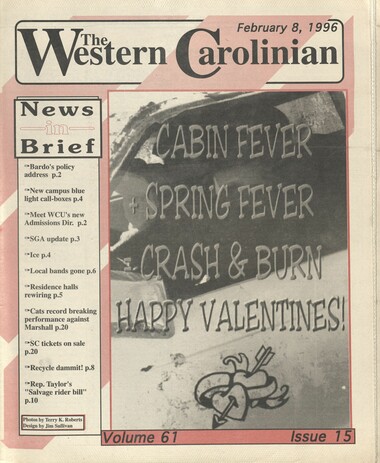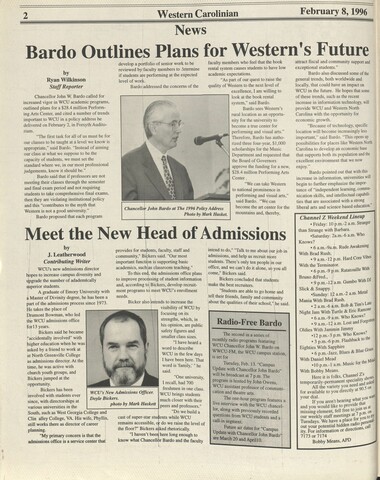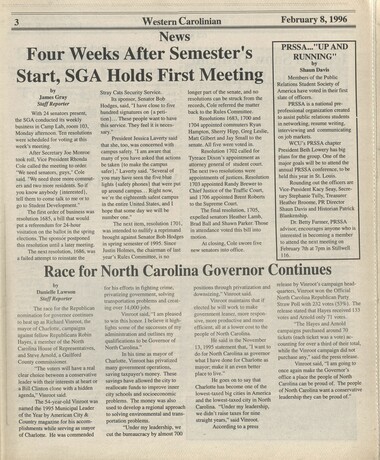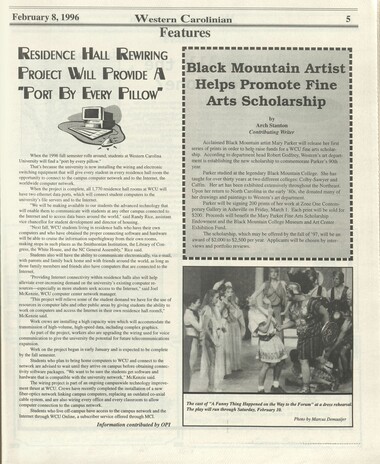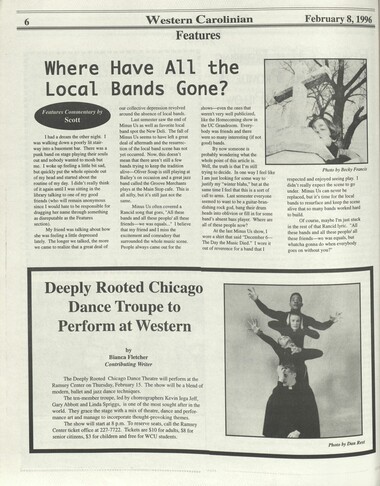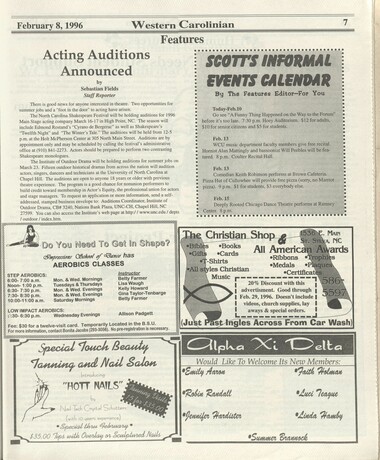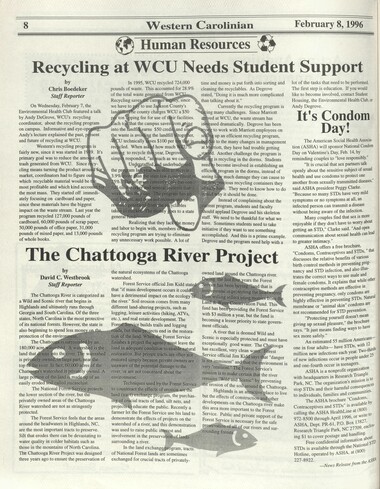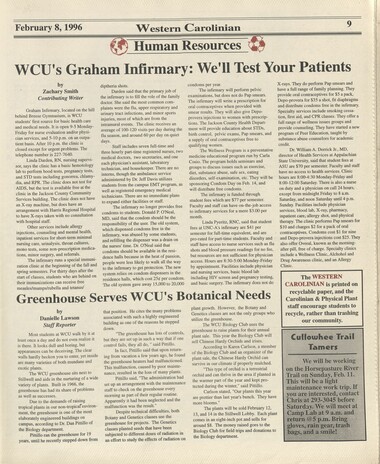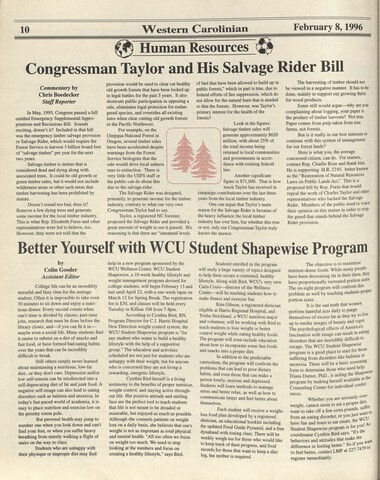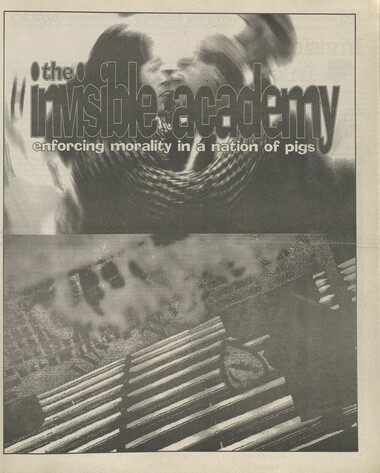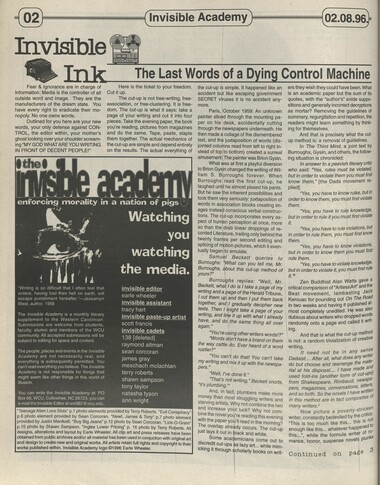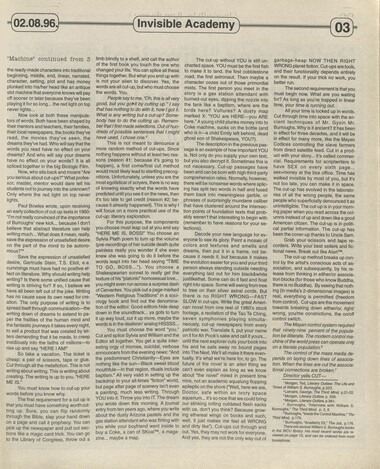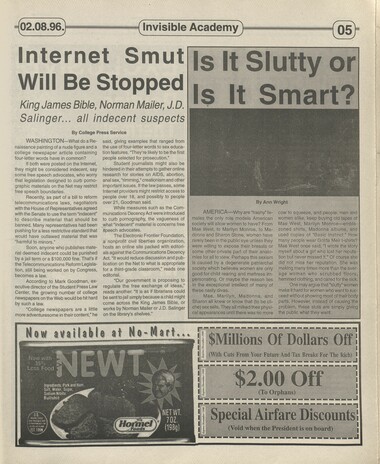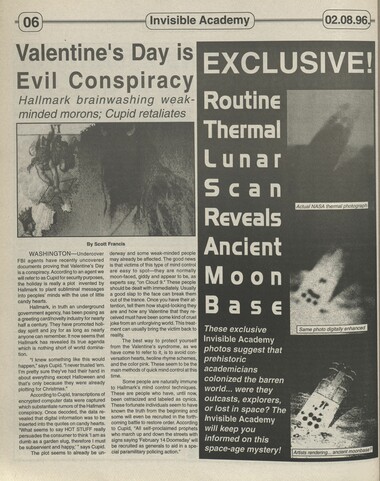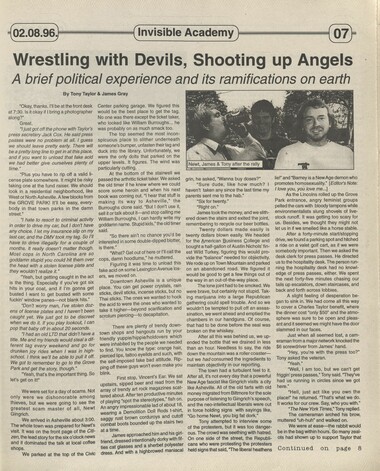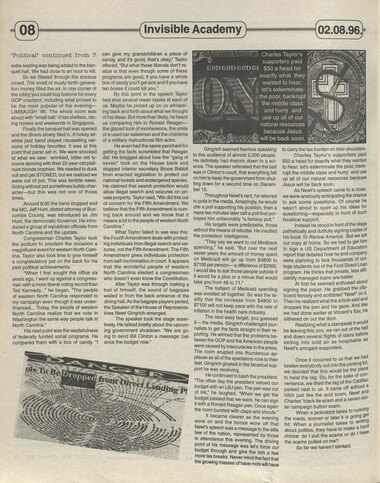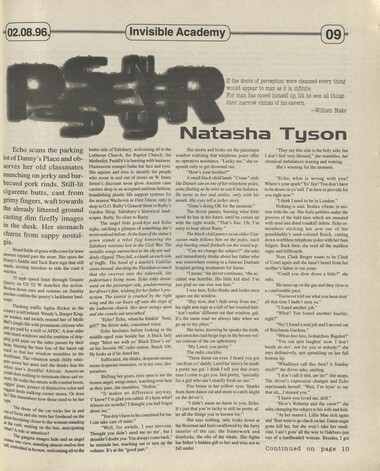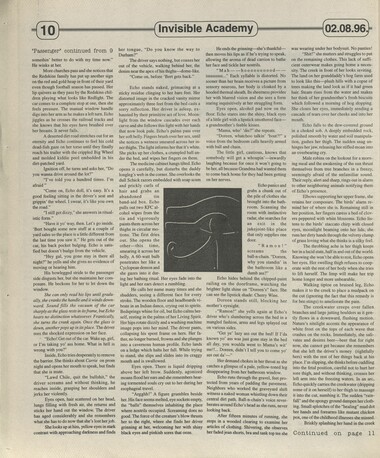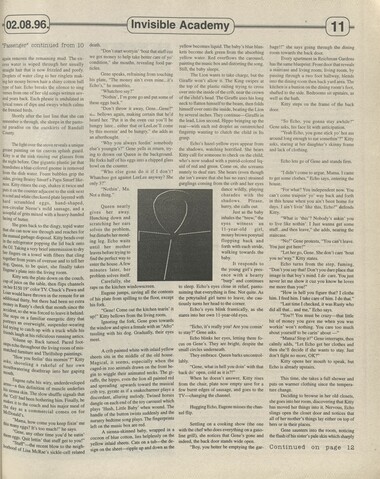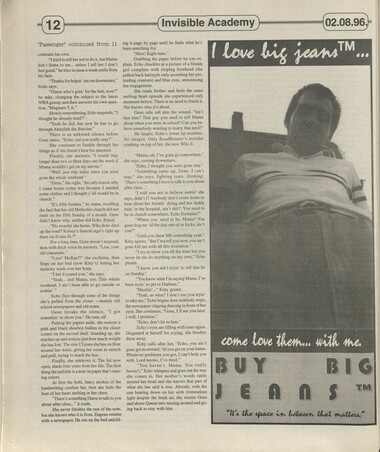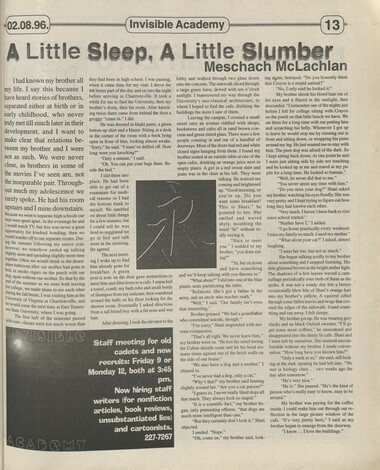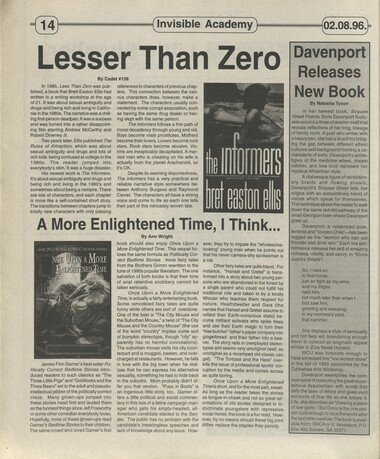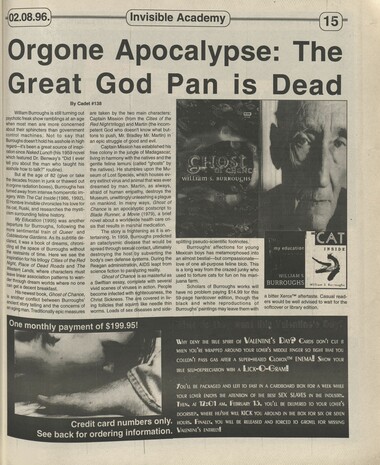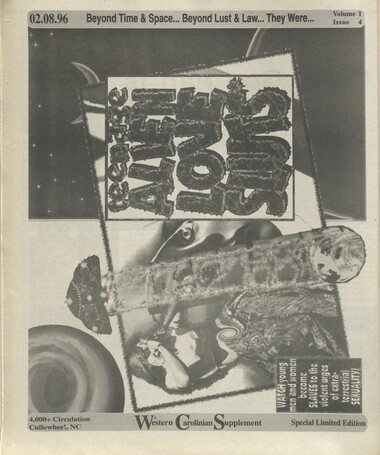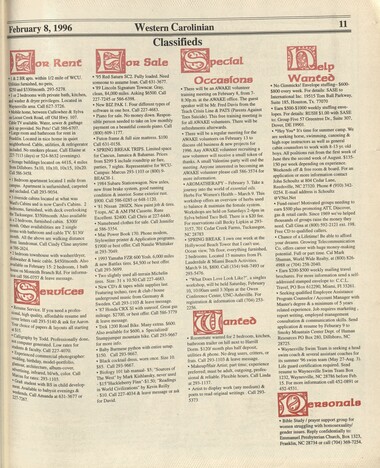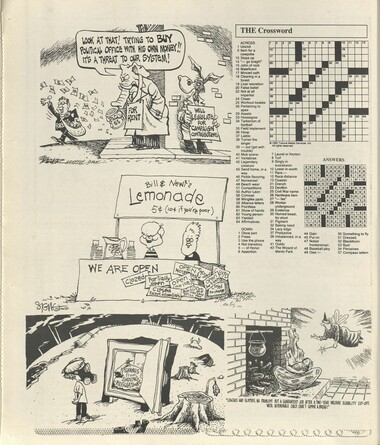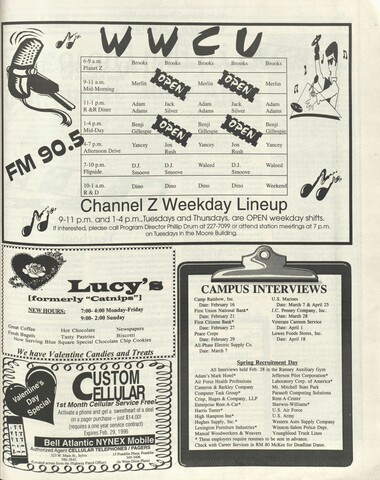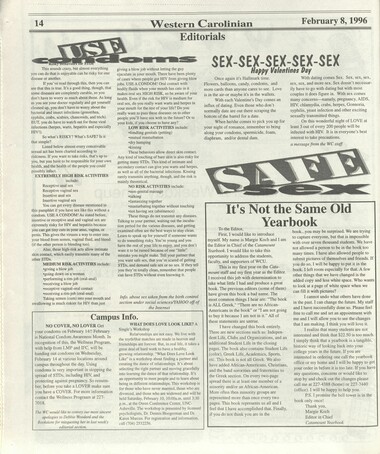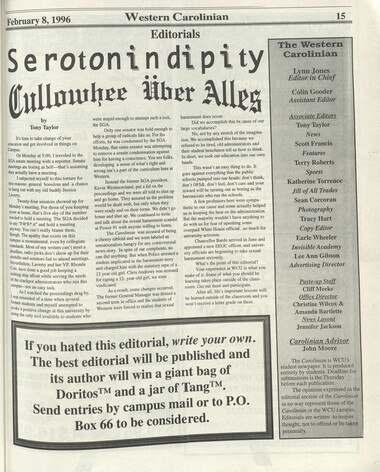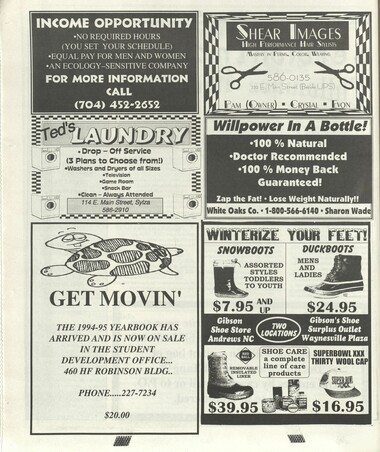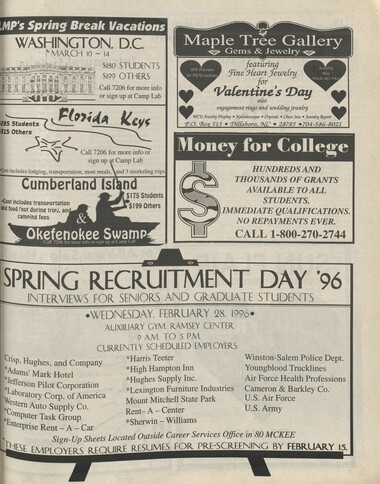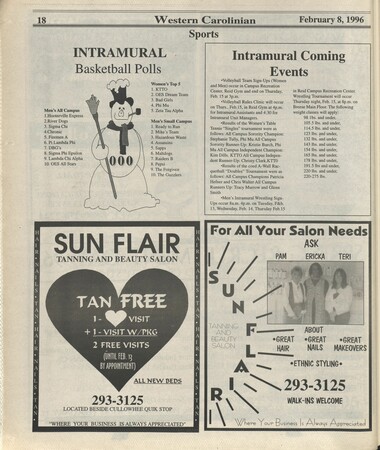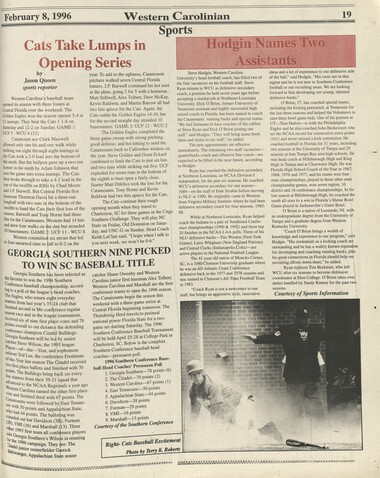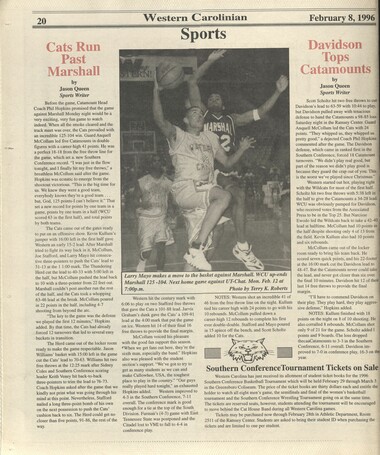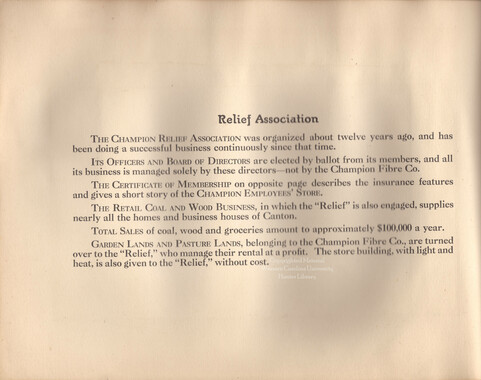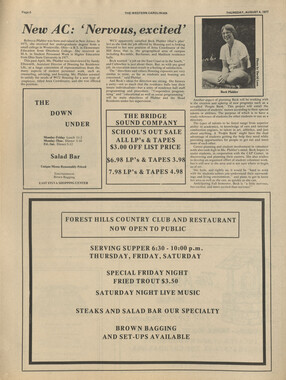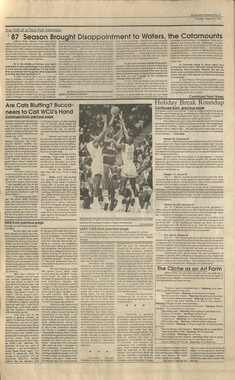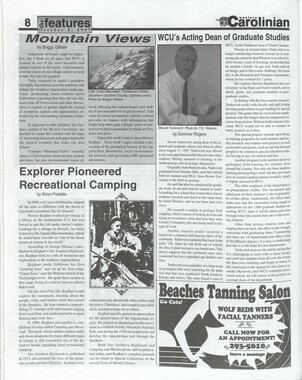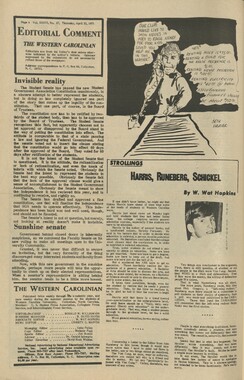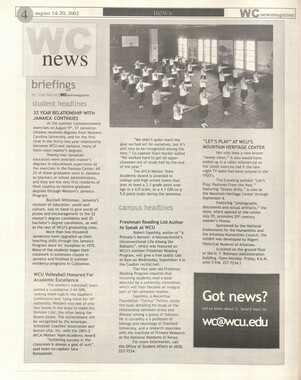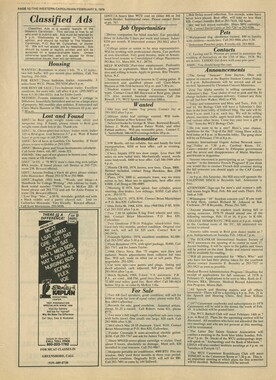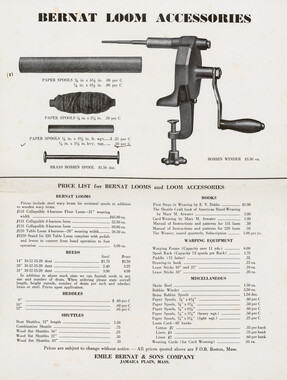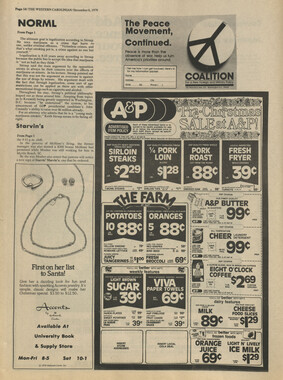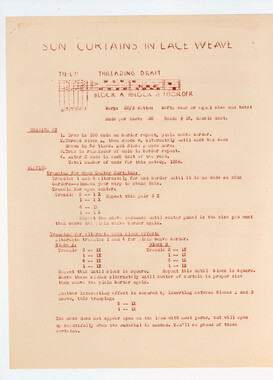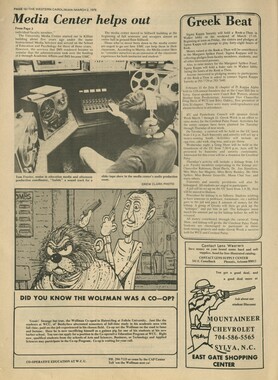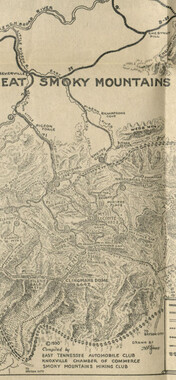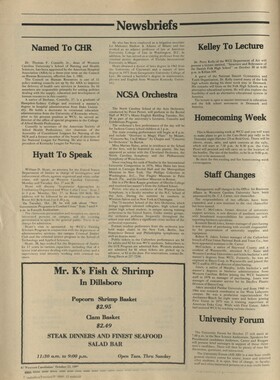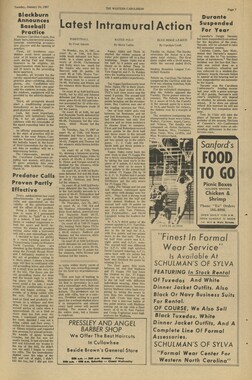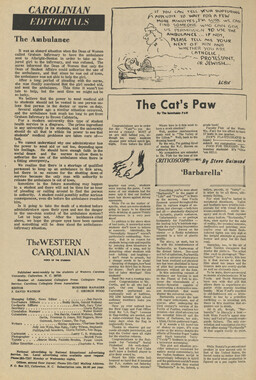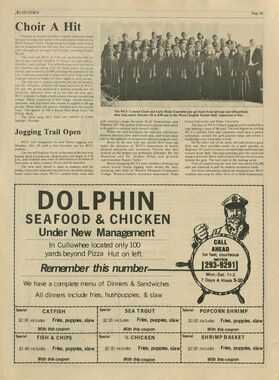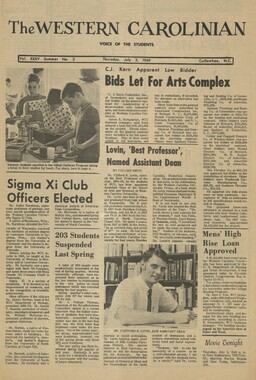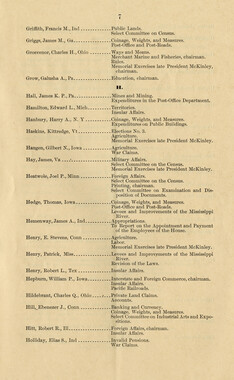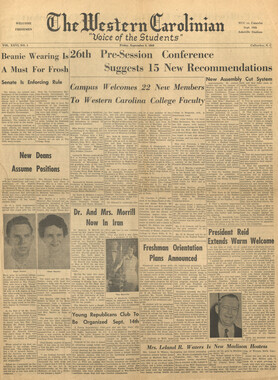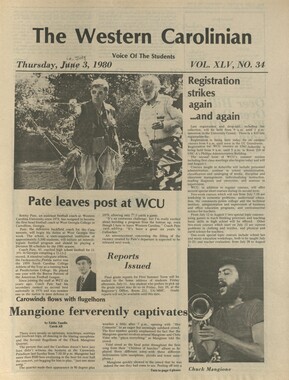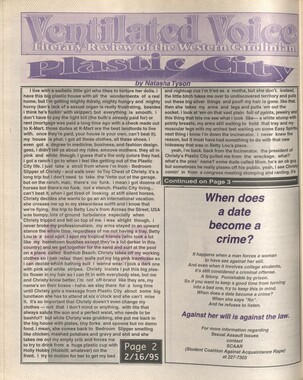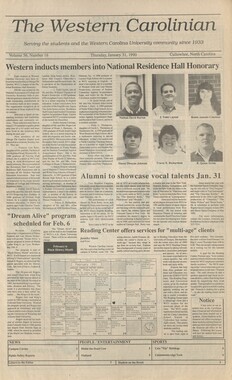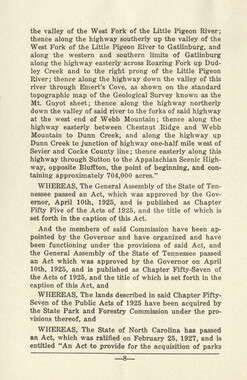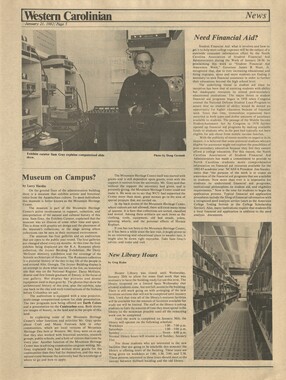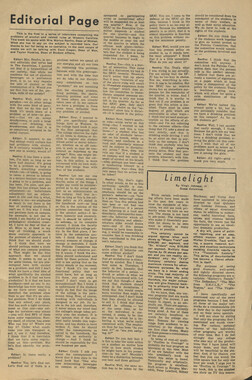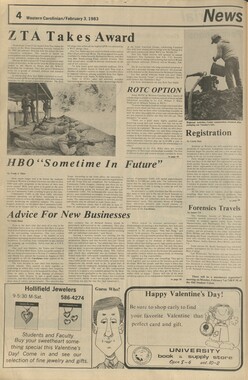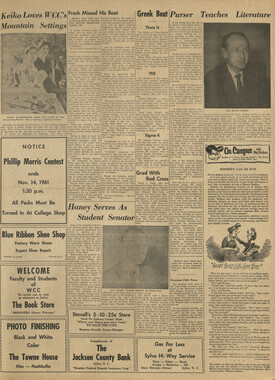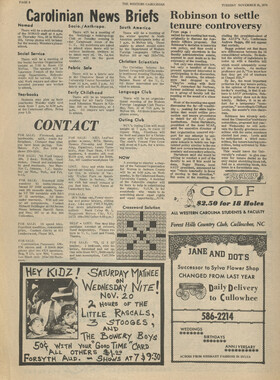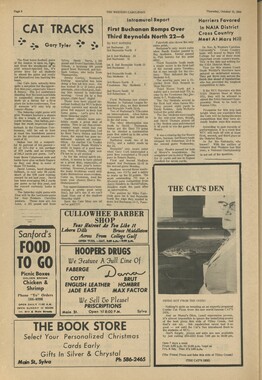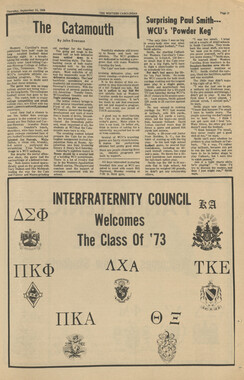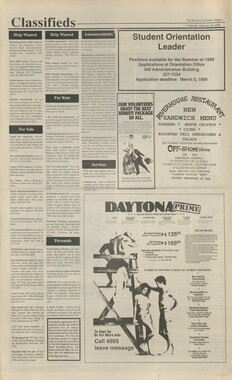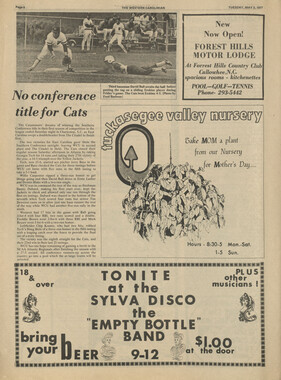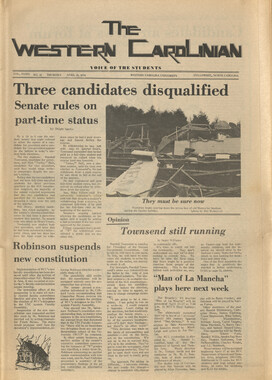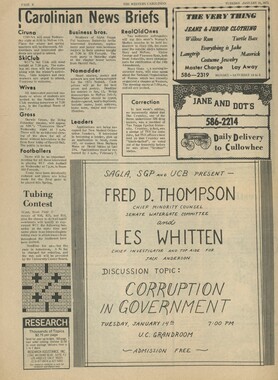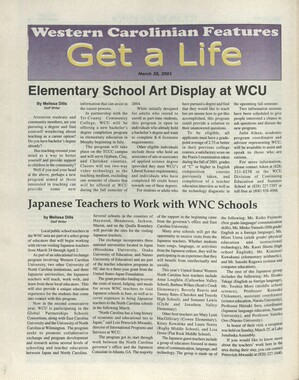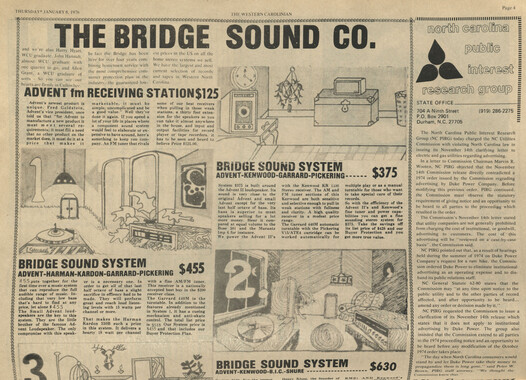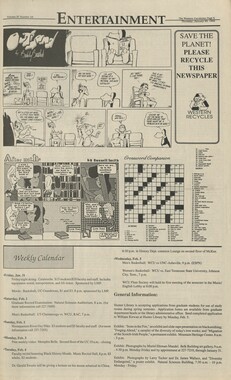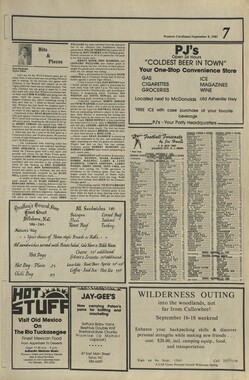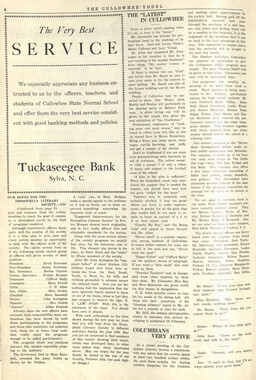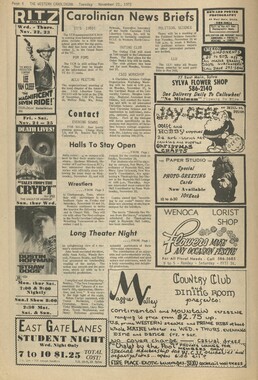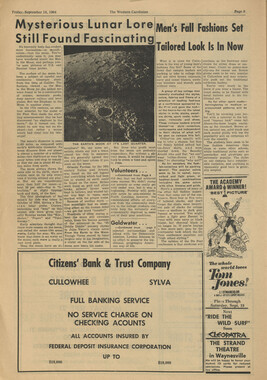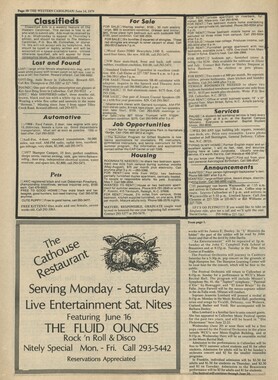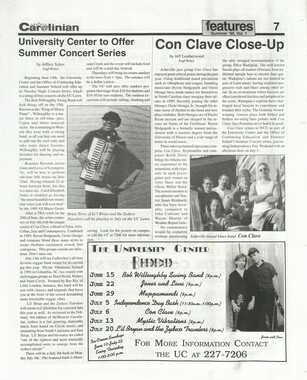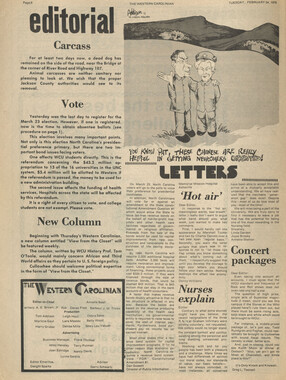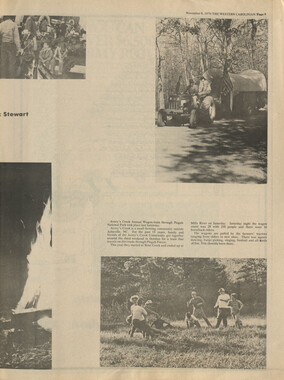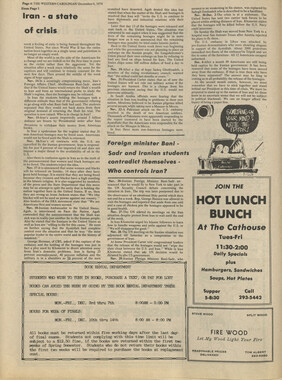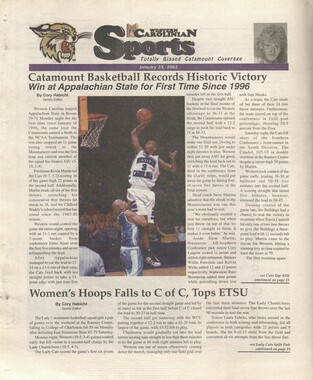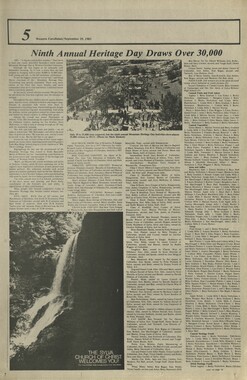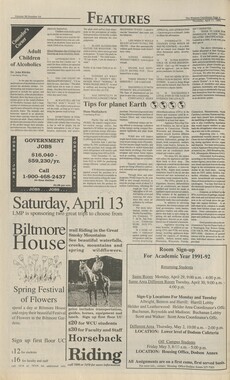Western Carolina University (20)
View all
- Canton Champion Fibre Company (2308)
- Cherokee Traditions (291)
- Civil War in Southern Appalachia (165)
- Craft Revival (1942)
- Great Smoky Mountains - A Park for America (2766)
- Highlights from Western Carolina University (430)
- Horace Kephart (941)
- Journeys Through Jackson (154)
- LGBTQIA+ Archive of Jackson County (85)
- Oral Histories of Western North Carolina (314)
- Picturing Appalachia (6772)
- Stories of Mountain Folk (413)
- Travel Western North Carolina (160)
- Western Carolina University Fine Art Museum Vitreograph Collection (129)
- Western Carolina University Herbarium (92)
- Western Carolina University: Making Memories (708)
- Western Carolina University Publications (2283)
- Western Carolina University Restricted Electronic Theses and Dissertations (146)
- Western North Carolina Regional Maps (71)
- World War II in Southern Appalachia (131)
University of North Carolina Asheville (6)
View all
- Allanstand Cottage Industries (62)
- Appalachian National Park Association (53)
- Bennett, Kelly, 1890-1974 (1388)
- Berry, Walter (76)
- Brasstown Carvers (40)
- Carver, George Washington, 1864?-1943 (26)
- Cathey, Joseph, 1803-1874 (1)
- Champion Fibre Company (233)
- Champion Paper and Fibre Company (297)
- Cherokee Indian Fair Association (16)
- Cherokee Language Program (22)
- Crowe, Amanda (40)
- Edmonston, Thomas Benton, 1842-1907 (7)
- Ensley, A. L. (Abraham Lincoln), 1865-1948 (275)
- Fromer, Irving Rhodes, 1913-1994 (70)
- George Butz (BFS 1907) (46)
- Goodrich, Frances Louisa (120)
- Grant, George Alexander, 1891-1964 (96)
- Heard, Marian Gladys (60)
- Kephart, Calvin, 1883-1969 (15)
- Kephart, Horace, 1862-1931 (313)
- Kephart, Laura, 1862-1954 (39)
- Laney, Gideon Thomas, 1889-1976 (439)
- Masa, George, 1881-1933 (61)
- McElhinney, William Julian, 1896-1953 (44)
- Niggli, Josephina, 1910-1983 (10)
- North Carolina Park Commission (105)
- Osborne, Kezia Stradley (9)
- Owens, Samuel Robert, 1918-1995 (11)
- Penland Weavers and Potters (36)
- Roberts, Vivienne (15)
- Roth, Albert, 1890-1974 (142)
- Schenck, Carl Alwin, 1868-1955 (1)
- Sherrill's Photography Studio (2565)
- Southern Highland Handicraft Guild (127)
- Southern Highlanders, Inc. (71)
- Stalcup, Jesse Bryson (46)
- Stearns, I. K. (213)
- Thompson, James Edward, 1880-1976 (226)
- United States. Indian Arts and Crafts Board (130)
- USFS (683)
- Vance, Zebulon Baird, 1830-1894 (1)
- Weaver, Zebulon, 1872-1948 (58)
- Western Carolina College (230)
- Western Carolina Teachers College (282)
- Western Carolina University (1794)
- Western Carolina University. Mountain Heritage Center (18)
- Whitman, Walt, 1819-1892 (10)
- Wilburn, Hiram Coleman, 1880-1967 (73)
- Williams, Isadora (3)
- Cain, Doreyl Ammons (0)
- Crittenden, Lorraine (0)
- Rhodes, Judy (0)
- Smith, Edward Clark (0)
- Appalachian Region, Southern (2569)
- Asheville (N.C.) (1923)
- Avery County (N.C.) (26)
- Blount County (Tenn.) (161)
- Buncombe County (N.C.) (1672)
- Cherokee County (N.C.) (283)
- Clay County (N.C.) (555)
- Graham County (N.C.) (233)
- Great Smoky Mountains National Park (N.C. and Tenn.) (519)
- Haywood County (N.C.) (3524)
- Henderson County (N.C.) (70)
- Jackson County (N.C.) (4694)
- Knox County (Tenn.) (25)
- Knoxville (Tenn.) (12)
- Lake Santeetlah (N.C.) (10)
- Macon County (N.C.) (420)
- Madison County (N.C.) (212)
- McDowell County (N.C.) (39)
- Mitchell County (N.C.) (132)
- Polk County (N.C.) (35)
- Qualla Boundary (981)
- Rutherford County (N.C.) (76)
- Swain County (N.C.) (2115)
- Transylvania County (N.C.) (270)
- Watauga County (N.C.) (12)
- Waynesville (N.C.) (84)
- Yancey County (N.C.) (72)
- Aerial Photographs (3)
- Aerial Views (60)
- Albums (books) (4)
- Articles (1)
- Artifacts (object Genre) (228)
- Bibliographies (1)
- Biography (general Genre) (2)
- Cards (information Artifacts) (38)
- Clippings (information Artifacts) (191)
- Crafts (art Genres) (622)
- Depictions (visual Works) (21)
- Design Drawings (1)
- Drawings (visual Works) (184)
- Envelopes (73)
- Facsimiles (reproductions) (1)
- Fiction (general Genre) (4)
- Financial Records (12)
- Fliers (printed Matter) (67)
- Glass Plate Negatives (381)
- Guidebooks (2)
- Internegatives (10)
- Interviews (815)
- Land Surveys (102)
- Letters (correspondence) (1013)
- Manuscripts (documents) (618)
- Maps (documents) (177)
- Memorandums (25)
- Minutes (administrative Records) (59)
- Negatives (photographs) (5835)
- Newsletters (1285)
- Newspapers (2)
- Occupation Currency (1)
- Paintings (visual Works) (1)
- Pen And Ink Drawings (1)
- Periodicals (193)
- Personal Narratives (10)
- Photographs (12976)
- Plans (maps) (1)
- Poetry (5)
- Portraits (4534)
- Postcards (329)
- Programs (documents) (151)
- Publications (documents) (2235)
- Questionnaires (65)
- Scrapbooks (282)
- Sheet Music (2)
- Slides (photographs) (402)
- Songs (musical Compositions) (2)
- Sound Recordings (796)
- Specimens (92)
- Speeches (documents) (15)
- Tintypes (photographs) (8)
- Transcripts (322)
- Video Recordings (physical Artifacts) (23)
- Vitreographs (129)
- Text Messages (0)
- A.L. Ensley Collection (275)
- Appalachian Industrial School Records (7)
- Appalachian National Park Association Records (336)
- Axley-Meroney Collection (2)
- Bayard Wootten Photograph Collection (20)
- Bethel Rural Community Organization Collection (7)
- Blumer Collection (5)
- C.W. Slagle Collection (20)
- Canton Area Historical Museum (2110)
- Carlos C. Campbell Collection (282)
- Cataloochee History Project (64)
- Cherokee Studies Collection (4)
- Daisy Dame Photograph Album (5)
- Daniel Boone VI Collection (1)
- Doris Ulmann Photograph Collection (112)
- Elizabeth H. Lasley Collection (1)
- Elizabeth Woolworth Szold Fleharty Collection (4)
- Frank Fry Collection (95)
- George Masa Collection (173)
- Gideon Laney Collection (452)
- Hazel Scarborough Collection (2)
- Hiram C. Wilburn Papers (28)
- Historic Photographs Collection (236)
- Horace Kephart Collection (861)
- Humbard Collection (33)
- Hunter and Weaver Families Collection (1)
- I. D. Blumenthal Collection (4)
- Isadora Williams Collection (4)
- Jesse Bryson Stalcup Collection (47)
- Jim Thompson Collection (224)
- John B. Battle Collection (7)
- John C. Campbell Folk School Records (80)
- John Parris Collection (6)
- Judaculla Rock project (2)
- Kelly Bennett Collection (1407)
- Love Family Papers (11)
- Major Wiley Parris Civil War Letters (3)
- Map Collection (12)
- McFee-Misemer Civil War Letters (34)
- Mountain Heritage Center Collection (4)
- Norburn - Robertson - Thomson Families Collection (44)
- Pauline Hood Collection (7)
- Pre-Guild Collection (2)
- Qualla Arts and Crafts Mutual Collection (12)
- R.A. Romanes Collection (681)
- Rosser H. Taylor Collection (1)
- Samuel Robert Owens Collection (94)
- Sara Madison Collection (144)
- Sherrill Studio Photo Collection (2558)
- Smoky Mountains Hiking Club Collection (616)
- Stories of Mountain Folk - Radio Programs (374)
- The Reporter, Western Carolina University (510)
- Venoy and Elizabeth Reed Collection (16)
- WCU Gender and Sexuality Oral History Project (32)
- WCU Mountain Heritage Center Oral Histories (25)
- WCU Oral History Collection - Mountain People, Mountain Lives (71)
- WCU Students Newspapers Collection (1744)
- Western North Carolina Tomorrow Black Oral History Project (69)
- William Williams Stringfield Collection (2)
- Zebulon Weaver Collection (109)
- African Americans (390)
- Appalachian Trail (35)
- Artisans (521)
- Cherokee art (84)
- Cherokee artists -- North Carolina (10)
- Cherokee language (21)
- Cherokee pottery (101)
- Cherokee women (208)
- Church buildings (170)
- Civilian Conservation Corps (U.S.) (110)
- College student newspapers and periodicals (1830)
- Dams (107)
- Dance (1023)
- Education (222)
- Floods (61)
- Folk music (1015)
- Forced removal, 1813-1903 (2)
- Forest conservation (220)
- Forests and forestry (1184)
- Gender nonconformity (4)
- Great Smoky Mountains National Park (N.C. and Tenn.) (181)
- Hunting (45)
- Landscape photography (25)
- Logging (118)
- Maps (83)
- Mines and mineral resources (8)
- North Carolina -- Maps (18)
- Paper industry (38)
- Postcards (255)
- Pottery (135)
- Railroad trains (71)
- Rural electrification -- North Carolina, Western (3)
- School integration -- Southern States (2)
- Segregation -- North Carolina, Western (5)
- Slavery (5)
- Sports (452)
- Storytelling (243)
- Waterfalls -- Great Smoky Mountains (N.C. and Tenn.) (66)
- Weaving -- Appalachian Region, Southern (280)
- Wood-carving -- Appalachian Region, Southern (328)
- World War, 1939-1945 (173)
Western Carolinian Volume 61 Number 15
Item
Item’s are ‘child’ level descriptions to ‘parent’ objects, (e.g. one page of a whole book).
-
-
Western Carolinian February 8,1996 News Ice_and Snow Difficult to Deal With by Lynn Jones Editor in Chief "What takes less than 24 hours to disperse will take over a week to clean up," said Roger Turk, Grounds Superintendent for the Physical Plant, of the salt/gravel mixture used in wintery conditions. The Physical Plant used four tons of the salt mixture on the roads and over 1,000 pounds of it on sidewalks. The plant is in charge of the entire 400-acre WCU campus and over 10 miles of travelled pavement. It's not just "dumping" salt. Keeping pavement clear of ice and snow in the winter is not a simple task. First of all, contrary to popular assumptions, salt cannot be laid until the snow stops falling. When the snow stops, the grounds crew has to scrape the pavement; then they can lay the chat, the name given to the salt/gravel mixture. If they start salting any earlier than when they scrape, the salt goes into a big pile of snow and serves no purpose. One problem the crew faces in clearing the roadways is the packed layer of snow that forms and gets driven on before they can clear and salt the roads. Once that packed layer of snow becomes ice, it is impossible to "push" or scrape off the roads. The only way to battle the ice is to lay the chat; The crew cannot lay the chat if weather conditions are not perfect with, the temperature no cooler than 20°F. If it is cooler than 20°, the chat will have no effect on the ice because it is too cold for it to melt, even with the assistance of the chat. Another difficulty with ice is that the sidewalk scrapers only work on snow. To remove the ice, salt must be distributed by hand to the more than five miles of sidewalks and stairways on campus. In order to quickly clear away enough of the stairways for people to pass, it is sometimes necessary to clear only one side on the first go round. This is why Turk encourages people to use the handrails attached to almost all of the stairs on campus. The walkways and stairways take longer to clear because concrete is colder than asphalt. It is also set into soil, which holds in the cold, as opposed to asphalt, which warms much more quickly. The Physical Plant has three trucks capable of scraping snow, as well as one capable of spreading the chat and scraping ice/snow. When these storms strike, the crew are put on a strenuous work schedule. The first priority in clearing the ice/snow is the in infirmary and EMS vehicle route, schedule for emergency weather conditions involves two night crew shifts. One runs from 5p.m. to 1a.m. while the other runs from 1a.m. until 8a.m. The normal weekly crews operate on an 8am to 5p.m. schedule. When the weather turns bad on weekends, public safety calls in the crews at the onset of poor driving conditions to begin salting and/or scraping. Turk requested patience from the students in this clearing process since so much of it is done by hand or with small equipment. One of the unnecessary problems that the Physical Plant faces is when they are attempting to clear certain areas of campus and cannot due to illegal parking by students. For example, leaving cars parked in front of Scott dorm illegally overnight prevents the scrapers and salt truck from entirely clearing the parking area/drop off zone. Turk requested that students assist in the cleanup process by keeping their cars clear of all thruways. Ten feet of clearance is necessary to get the trucks through. Salt can damage student vehicles. It needs to be cleaned from the cars as soon as the weather permits because it quickly causes rusting and corrsion. Washing the wheel wells and underbelly of the vehicles is imperative and is often overlooked because the salt does not show on the surface. As far as campus cleanup is concerned, the rain will help wash away some of the salt but there is still the gravel to be swept up by the street sweepers and blowers. The holes in the asphalt cannot be completely repaired until late April when the temperature allows the companies to produce it, until then patches are used as band-aids to carry the campus through the rest of the winter. Interested in Writing for the Carolinian? Contact the News Editor, Features Editor, Human Resources Editor or Sports Editor at 227-7267 February—Black History Month Calendar of Events • Feb. 8: O.E.S. Dream Date Auction II—9 p.m. Forsyth Auditorium—Free Admission! • Feb. 9: LMP Movie Presentation, "Panther"—8 p.m. Forsyth Auditorium • Feb. 12: "The Good Ole Days" Mr. Alfred Wiggins, WCU Dept. of Communications & Theatre Arts— 8 p.m. McKee Rm. 60 • Feb. 14: LMP Movie Presentation "Jason's Lyric"—9 p.m. Forsyth Auditorium • Feb. 19: Black History Quiz Bowl Time & Place TBA» Feb. 23: LMP Presents Grammy Award Nominees for Contemporary Gospel Choir The Tri-City Singers 8 p.m. Coulter Recital Hall • Feb. 25: Blues Guitarist, Singer & Dancer Algia Mae Hinton— 3:30 p.m. Founders Auditorium (Sponsored by The WCU Mountain Heritage Center) • Feb. 26: Mr. Alfred Wiggins presents "Diamond Jake", an Original One Man Show—7:30 p.m. Hoey Auditorium WCU Blue Light Special by Jessica Devaney Staff Reporter On February 1, 1996 the Department of Public Safety activated a new emergency call box system. These box systems are the new blue lights, mounted on fifteen- foot poles, which decorate WCU's campus in five locations. The lights are located at Whitmire Stadium (near the Ramsey Center), in the freshman parking lot across from Cullowhee Creek, Hunter Library, in the Baptist Church parking lot, and at Joyner Plaza. The blue lights were installed for the aid of people with a need for immediate medical assistance, or to summon help from campus police. When the red of the box, along with instructions for use. Officers receive the message and respond immediately. There is an intercom on the box that allows the person signaling the alarm to converse with campus police. The Blue Light System was financed by all students who registered a vehicle in the last year and by the Traffic Auxiliary Trust Fund, which is also financing a number of other projects for future. A $3 increase in registration fees made the blue light system possible. The system cost the students of WCU $23,000. The Department of Public Safety would like to remind students that the system has been install for their safety andthatprosecu-] tion will result 1 from damaging0'- tampering< the system- ensure that no one on campus steals or vandalizes a Blue L# Box, an interna' silent alarm h^ been installed. j with To il™," t mezme"zed by a WCU call box recently lmtaUed outside the Old Student Union. Photo by Sean Corcoron Since the installation oftb system four prank occurred, but calls have but dealt have been < , i(. found with by warnings. "Anyone who i> ^ damaging or tampering with the sys be prosecuted." Chief McAbee stated-
Object
Object’s are ‘parent’ level descriptions to ‘children’ items, (e.g. a book with pages).
-
The Western Carolinian is Western Carolina University's student-run newspaper. The paper was published as the Cullowhee Yodel from 1924 to 1931 before changing its name to The Western Carolinian in 1933.
-
